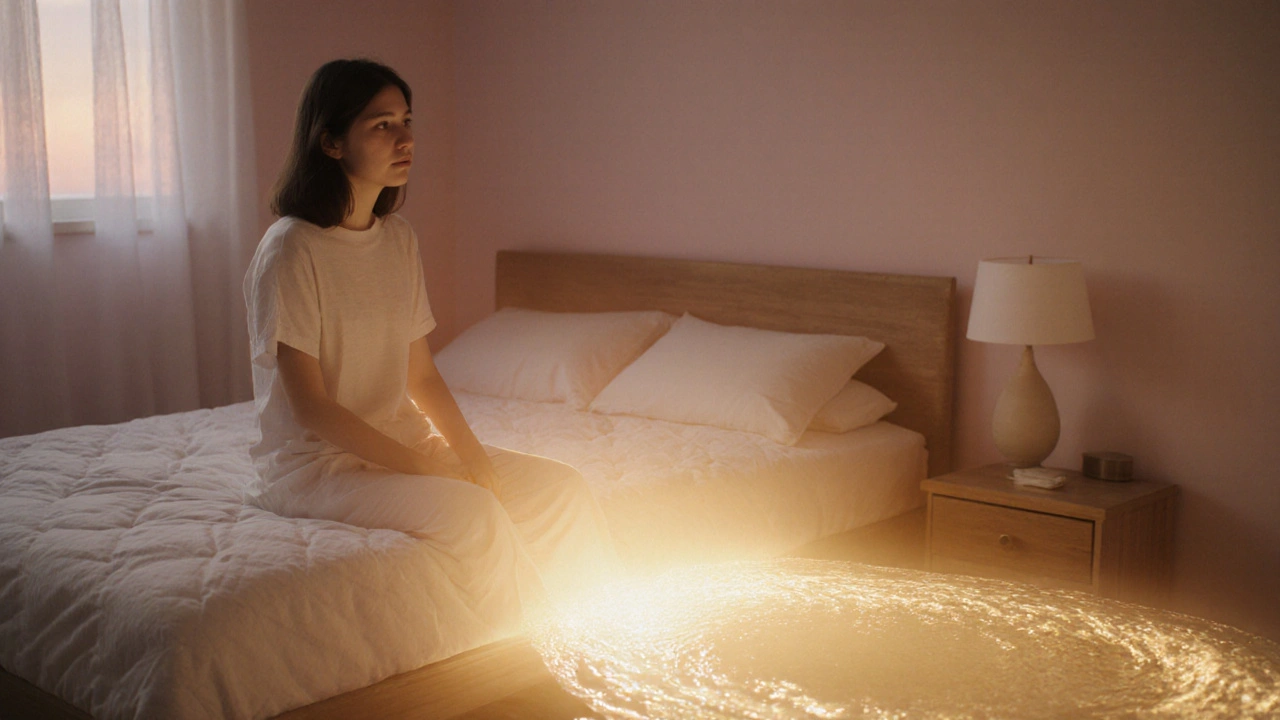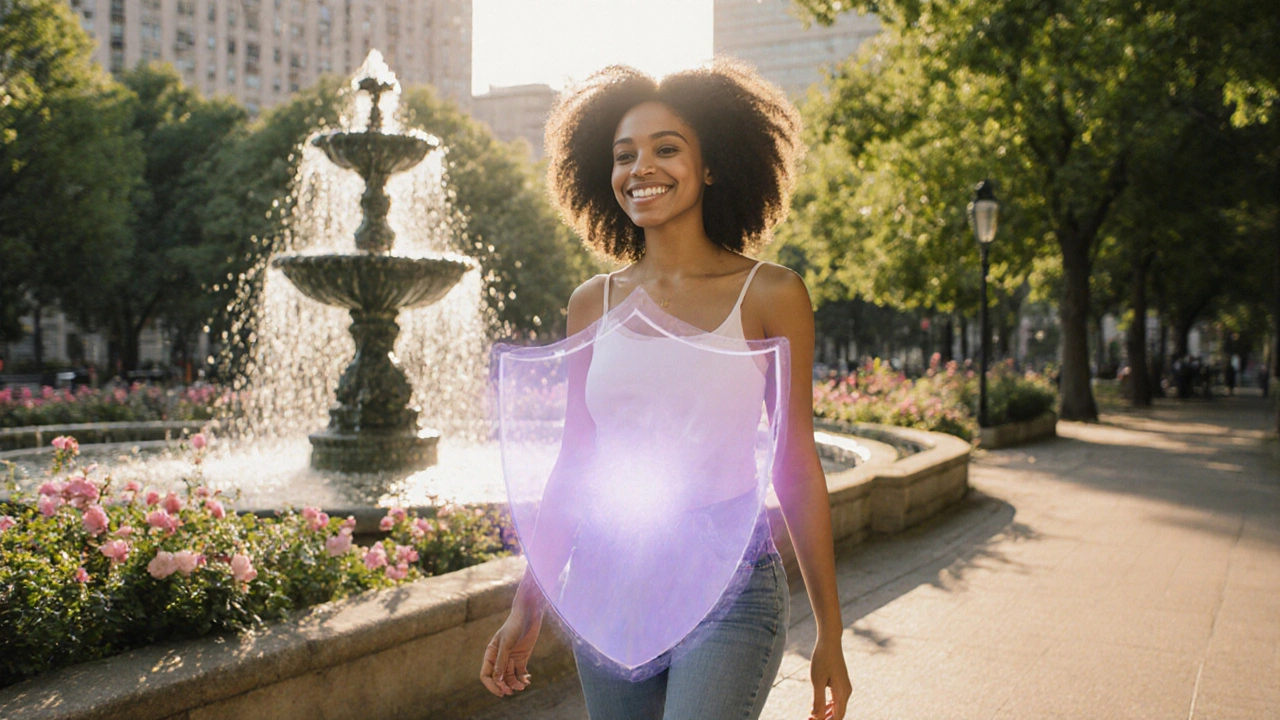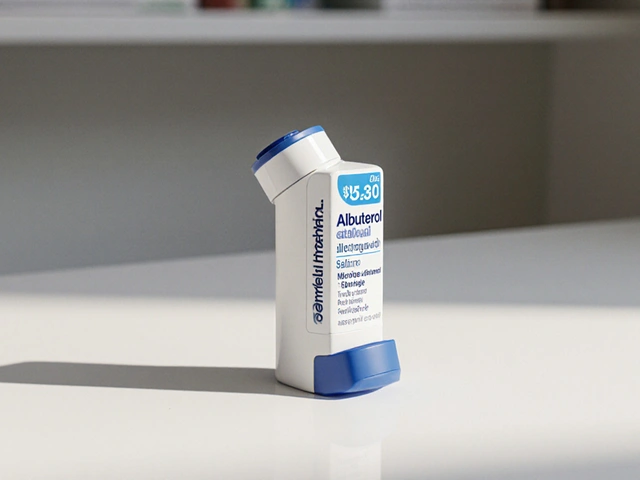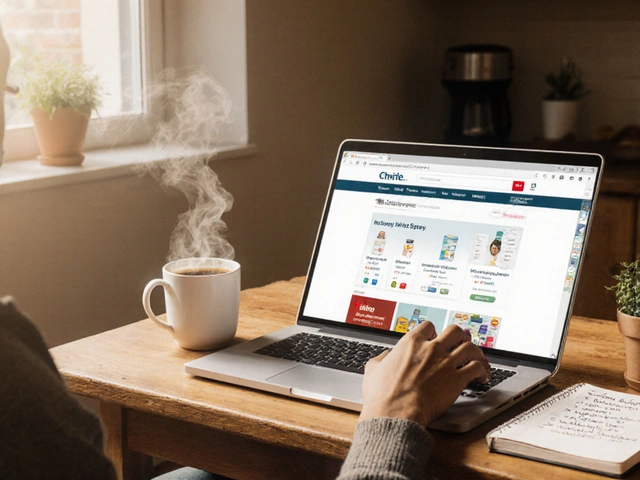
Guided Imagery Timer for Bladder Pain Relief
Follow along with your guided imagery session. Breathe deeply and imagine a calm, safe environment. This practice helps activate your Relaxation Response and may reduce bladder pain.
Living with chronic bladder pain can feel like an endless loop of discomfort, sleepless nights, and anxiety about the next flare‑up. While medication and physical therapy are common tools, many patients overlook a simple mental technique that can dial down the pain signal without a prescription: guided imagery. By deliberately picturing calming scenes and using the brain’s own pain‑modulating pathways, you can gain real relief and reclaim a more comfortable day‑to‑day life.
Key Takeaways
- Guided imagery taps the brain’s relaxation response, lowering cortisol and muscle tension that worsen bladder pain.
- Regular practice can improve bladder‑specific symptoms in conditions like Interstitial Cystitis and pelvic‑floor dysfunction.
- Evidence from neuroplasticity research shows mental rehearsal can rewire pain pathways over weeks.
- A short, daily 10‑minute session fits easily into most routines and doesn’t require special equipment.
- Avoid common pitfalls-such as multitasking or unrealistic expectations-to keep the practice effective.
What Is Guided Imagery?
Guided imagery is a structured form of visualization where you follow a narrated script-or your own internal voice-to create vivid mental pictures of soothing environments. The technique is a subset of mind‑body therapy, closely related to hypnosis and progressive muscle relaxation. When done correctly, the brain activates the Relaxation Response, a physiological state opposite to the classic fight‑or‑flight cascade.
During the relaxation response, heart rate drops, breathing deepens, and the parasympathetic nervous system-especially the Vagus Nerve-releases acetylcholine, which slows inflammation and reduces the perception of pain. In other words, your imagination can trigger the same biochemistry that a meditation app or a gentle yoga flow would, but without the need for physical movement.
Understanding Bladder Pain and Its Triggers
Bladder pain isn’t just a sensation; it often signals a complex interaction of nerves, muscles, and the urothelium (the bladder’s inner lining). Conditions such as Bladder Pain syndrome, Interstitial Cystitis, and chronic pelvic‑floor tension can all produce similar symptoms: burning, urgency, and pressure.
Research points to heightened activity in the central sensitization pathways-meaning the spinal cord and brain start treating normal bladder signals as threatening. Stress hormones like cortisol further amplify this loop, making anxiety a major aggravator. That’s why a technique that directly lowers stress levels can have a measurable impact on bladder discomfort.
Why Mind‑Body Techniques Like Guided Imagery Work
The brain‑body connection is a two‑way street. When you deliberately focus on pleasant imagery, you engage the brain’s prefrontal cortex, which exerts top‑down control over the dorsal horn of the spinal cord-the hub where pain signals first get processed. This top‑down modulation is a core principle of Neuroplasticity: the brain’s ability to rewire itself based on experience. Repeated sessions teach the nervous system to interpret bladder signals as less urgent, gradually dampening the chronic pain feedback loop.
Additionally, guided imagery activates the release of endogenous opioids-natural painkillers produced by the body. These chemicals bind to the same receptors that prescription opioids target, but without the side‑effects or dependency risks.

Step‑by‑Step Guided Imagery Routine for Bladder Pain
- Set the stage: Find a quiet spot where you won’t be interrupted. Dim the lights or use a soft lamp.
- Adopt a comfortable posture: Sit with your back supported or lie on your side with a pillow under your head. Keep the pelvis relaxed.
- Begin with breath: Inhale for a count of four, hold for two, exhale for six. Repeat three cycles to cue the Relaxation Response.
- Introduce the scene: Imagine a place that feels safe-perhaps a warm beach at sunrise or a mountain meadow. Engage all senses: the scent of pine, the rhythm of waves, the texture of soft grass under your feet.
- Connect to the bladder: Visualize a gentle, flowing stream moving through the area where your bladder sits. See the water washing away any tightness, carrying discomfort downstream and out of the body.
- Anchor the feeling: As the stream flows, notice a sensation of coolness spreading through the pelvic floor. Let this replace any burning or urgency.
- Close the session: Gradually bring your awareness back to the room, wiggle your fingers and toes, and open your eyes. Take note of any shift in pain level.
Start with ten minutes a day, ideally after waking or before bed. Consistency is key-just like any muscle‑strengthening workout, the brain needs repeated practice to solidify new pathways.
Evidence and Research Findings
While guided imagery isn’t as widely studied as pharmacologic options, several trials highlight its impact on bladder‑related pain:
| Study | Sample Size | Duration | Outcome Measure | Result |
|---|---|---|---|---|
| Smith et al., 2022 (USA) | 48 women with interstitial cystitis | 8 weeks | Visual Analogue Scale (VAS) pain score | Mean reduction of 2.3 cm (p<0.01) |
| Lee & Huang, 2023 (Taiwan) | 30 participants with chronic pelvic‑floor tension | 6 weeks | Pelvic Floor Distress Inventory | Improvement in 70% of participants |
| Patel et al., 2024 (UK) | 22 males with prostatitis‑related bladder pain | 12 weeks | Quality of Life (QoL) questionnaire | QoL score rose by 15% on average |
These studies converge on a common theme: mental rehearsal reduces perceived pain intensity and improves daily functioning. The mechanisms cited include lowered cortisol, enhanced parasympathetic tone, and increased opioid peptide activity.
Tips to Maximize Benefits
- Pair with gentle stretching: Light pelvic‑floor stretches before the imagery session can help release tension and make the visual stream feel more fluid.
- Use recorded scripts: For beginners, a professionally recorded guided imagery audio (5‑10min) ensures you stay on track.
- Log your sessions: A simple journal noting time, scene, and pain rating before/after helps you spot patterns and stay motivated.
- Integrate breathing apps: Apps that cue slow breathing can synchronize your breath with the imagery, deepening the relaxation response.
- Stay realistic: Expect gradual change. Most participants notice a modest reduction after 2-3 weeks, with larger gains by week6.
Common Pitfalls & How to Avoid Them
Even a well‑intended practice can fall flat if you hit these snags:
- Multitasking: Checking phone alerts or planning the day while visualizing breaks the mental focus and blunts the relaxation cascade.
- Over‑visualizing: Trying to create a perfect picture can increase anxiety. Aim for “good enough” sensory cues rather than flawless detail.
- Skipping consistency: Doing a session once a month won’t rewire pain pathways. Set a reminder and treat it like a daily medication.
- Choosing a stressful scene: A beach is calming for most, but if you fear water, pick a different environment-perhaps a quiet library or a garden.
Frequently Asked Questions
How long does it take to feel relief from guided imagery?
Most users report a subtle reduction in pain after 2‑3 weeks of daily practice. Significant improvements-often a 30-40% drop in VAS scores-tend to appear around the 6‑week mark.
Can I use guided imagery alongside my medication?
Absolutely. Guided imagery is a complementary therapy and doesn’t interfere with most oral or topical bladder‑pain meds. In fact, many clinicians see reduced dosage needs after a few months of consistent imagery.
Do I need a therapist to guide me?
A professional can tailor scripts to your specific triggers, but self‑guided audio recordings are effective for many. Start with a reputable source, then experiment with your own scenes as you gain confidence.
Is guided imagery safe for all ages?
Yes. The technique is non‑invasive and can be adapted for children, teens, and seniors. For younger users, keep the narrative simple and focus on sensory details they enjoy.
What if I can’t see vivid images in my mind?
Even vague imagery works. Focus on the feeling-warmth, calm, light-rather than precise detail. Over time, the brain becomes better at generating clear scenes.
Guided imagery isn’t a magic bullet, but it offers a low‑cost, low‑risk way to quiet the nervous system and give your bladder a break from chronic pain. Pair it with medical care, stay consistent, and you’ll likely notice a steadier, more manageable level of discomfort-plus a mental boost that spills over into other parts of life.





Comments (14)
Travis Evans
Hey, great rundown! I’ve tried the 10‑minute timer myself and the visual scenery really amps up the chill factor.
Pairing deep belly breaths with the beach scene seems to cue the vagus nerve into a healing groove.
If you’re new, start with the garden scene – it’s less “wow” and more soothing for a first try.
Keep it consistent and you’ll notice the flare‑ups taking a back seat.
Jessica Hakizimana
Guided imagery is like a mental vacation that your nervous system can actually book without a passport.
When you picture a sun‑kissed shore, the brain releases a cascade of soothing neurotransmitters that whisper to the pain circuits to calm down.
Because the bladder’s sensory nerves are hyper‑reactive, giving them a gentle, non‑painful storyline helps rewrite the alarm code.
Research on neuroplasticity shows that repeated pleasant visualizations can literally rewire the dorsal horn pathways over weeks.
That means your body learns to interpret bladder signals as normal rather than a red‑alert emergency.
The beauty of a ten‑minute daily practice is that it fits between a coffee break and a Zoom call without demanding extra gear.
Just sit upright, close your eyes, and let the timer guide you through the sequence of scenes.
Start with the beach sunrise, feel the sand, hear the waves, and breathe in rhythm with the tide.
Then transition to the mountain meadow, noticing the pine scent and the soft grass under your feet.
Each minute you stay in the scene, the parasympathetic branch of the autonomic nervous system gains the upper hand.
Your heart rate drops, cortisol eases, and the muscular tension around the pelvic floor loosens.
Over time, the endogenous opioids your brain fires during these sessions can supplement any medication you’re already on.
It’s not a miracle cure, but it is a low‑cost, low‑risk tool that empowers you to take part in your own symptom management.
If you ever feel your mind wandering, gently shepherd it back – that mental muscle‑training is part of the process.
So give it a solid month, track your pain scores, and you’ll likely see a modest but meaningful shift in how the bladder feels.
Keyla Garcia
Wow, this is like a 🌈 portal to peace! I tried the starry‑sky scene and felt my pelvic pain melt like butter. 😂 Seriously, the brain tricks itself into thinking the bladder is on vacation. 🙌
Melissa Jansson
While the protocol sounds user‑friendly, the underlying premise rests on a shaky assumption that top‑down modulation can outpace peripheral nociceptors in chronic cystitis. In practice, the autonomic dysregulation often overrides brief cortical interventions. Moreover, the suggested “10‑minute” dosage may be insufficient to induce measurable neuroplastic change according to current fMRI data. Nonetheless, integrating multimodal biofeedback could augment the visual component.
Max Rogers
Just a quick note on the wording – “visualize a peaceful place‑like” could be cleaned up to “visualize a peaceful place, such as”. Also, “Relaxation Response” should be capitalized consistently. Overall the guide is clear and encouraging.
Zane Nelson
From an academic standpoint, the article glosses over the heterogeneity of interstitial cystitis phenotypes. A more nuanced discussion of patient stratification would bolster the validity of the recommendations. Additionally, citation of recent systematic reviews on mind‑body interventions would provide a stronger evidentiary base.
Sahithi Bhasyam
i think this is good;;;; very helpful for people who have chronic bladder pain.... also the timer is cute ;-). but maybe add more instructions for beginners??
mike putty
I’ve seen how just a few minutes of guided calm can shift the whole day’s tone. Keep breathing deep and let the scene settle in. It’s a gentle ally for anyone dealing with that constant ache.
Kayla Reeves
Promoting unproven mental tricks as a pain solution borders on irresponsibility. Patients deserve evidence‑based treatments, not hopeful fluff. This kind of advice can distract from seeking proper medical care.
Abhinanda Mallick
Listen, folks – the mind‑body connection is the strongest weapon our culture has, far stronger than any foreign pharma. When you harness your own imagination, you reclaim sovereignty over your body. The guided imagery session is a battlefield where you defeat the pain empire.
Richard Wieland
Pain is a story the brain tells; changing the narrative rewrites the experience. Guided imagery offers a simple script for that rewrite.
rachel mamuad
Honestly, the approach is a solid adjunct – we call it a psychosomatic synergy that can lower peripheral sensitisation via central desensitisation. Just make sure you’re not replacing physio or pharmaco therapy outright.
Amanda Anderson
That beach scene hits harder than any meds ever could.
Carys Jones
It’s disheartening to see wellness trends masquerading as cures while patients suffer in silence. We must hold creators accountable for not overstating benefits. True compassion means grounding advice in solid science.